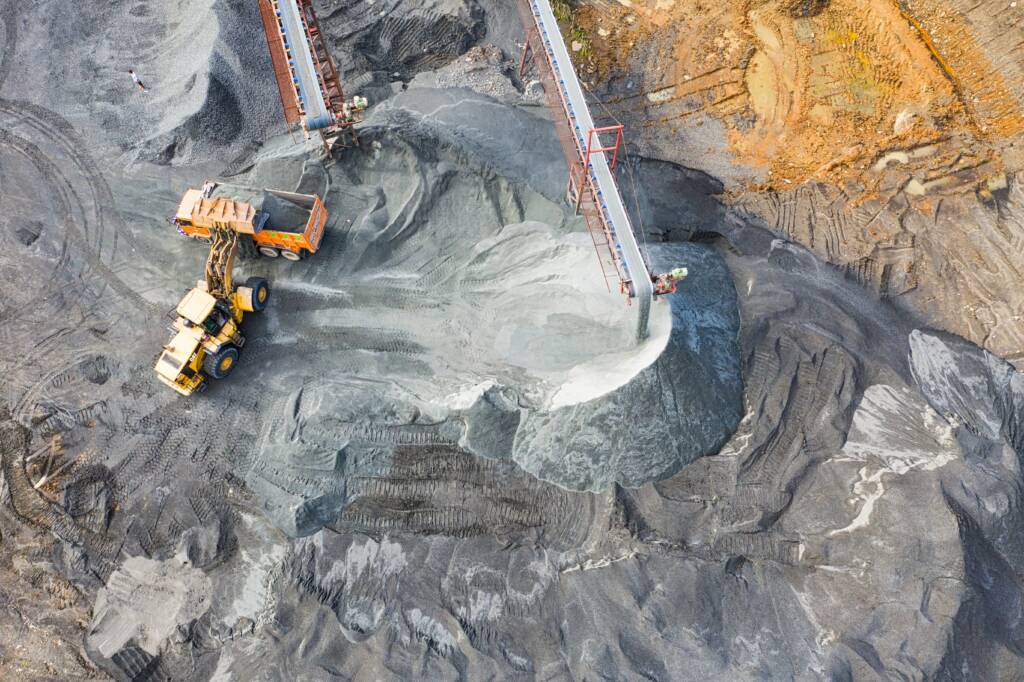Are you ready to dig deep into the world of oil, gas, and mining equipment? Whether you’re a seasoned industry professional or just starting, this blog post is your ultimate guide to everything new and used equipment.
From cutting-edge technology revolutionizing the sector to insider tips on finding the best deals in the market, we’ve got you covered. So grab your hard hat and prepare for an exciting journey through the fascinating world of oil, gas, and mining machinery!
Benefits of Using New and Used Equipment
Using new and used equipment is essential for oil, gas, and mining companies. Not only does it help with efficient operations, but it also has many benefits that can positively impact a company’s bottom line. This section will discuss the advantages of using new and used equipment in these industries.
- Cost Savings:
One primary benefit of using new and used equipment is cost savings. The new kit comes at a significant price point, which may not be feasible for all companies, significantly smaller businesses, or startups. On the other hand, used equipment is available at a lower cost and can provide significant cost savings for companies on a budget. Companies can allocate funds towards different aspects of their business operations by opting for used equipment instead of purchasing brand-new ones. - Faster Implementation:
In industries like oil, gas & mining, where time is money, having access to readily available equipment can make all the difference in project timelines. Used equipment is typically assembled and ready to use compared to newly purchased ones that need to be set up before being put into operation. This faster implementation allows projects to move forward quickly without any delays due to waiting for new equipment to arrive.
Factors to Consider When Purchasing Equipment for the Oil, Gas & Mining Industry
When it comes to purchasing equipment for the oil, gas, and mining industries, several factors need to be considered. These industries have unique demands and requirements for their equipment, and making the right choice can significantly impact efficiency, productivity, and safety. This section will discuss some critical factors that should be considered when purchasing equipment for these industries.

- Reliability and Durability:
The oil, gas, and mining industries operate in harsh environments with extreme temperatures, corrosive materials, and heavy loads. Therefore, one of the most important factors to consider is the reliability and durability of the equipment. Investing in high-quality equipment that can withstand these conditions without frequent breakdowns or maintenance needs is crucial. This ensures uninterrupted operations and reduces overall costs in the long run. - Safety Features:
Safety is a top priority in these industries due to the potential hazards of handling heavy machinery and hazardous materials. When purchasing equipment, it is essential to ensure that it meets all necessary safety standards and has additional safety features, such as emergency shut-off switches or automatic sensors for detecting potential dangers. - Efficiency and Productivity:
Time is money in these industries; therefore, efficiency is critical when purchasing equipment. Look for features like fast cycle times or automated functions that can help increase productivity while reducing labor costs. In addition, please pay attention to fuel consumption rates, as they can significantly impact operating costs.
Types of Equipment Used in the Industry
The oil, gas, and mining industry is a highly technical and complex sector that relies heavily on advanced equipment and machinery for efficient operations. From drilling rigs to heavy-duty trucks, various types of equipment are used in this industry. This section will discuss the different categories of tools and machines commonly used in the oil, gas, and mining sectors.
- Drilling Equipment:
Drilling is essential in extracting natural resources such as oil, gas, coal, and minerals. The most common type of drilling equipment used in this industry is a rotary drill. It consists of a rotating drill bit attached to a long drill string that penetrates the earth’s surface to extract resources from underground reservoirs. Other types of drilling equipment include directional drills, top-drive rigs, hydraulic impact hammers, and mud pumps. - Earthmoving Equipment:
Earthmoving equipment plays a crucial role in constructing and maintaining mines and wells. This category includes heavy-duty machines like excavators, bulldozers, loaders, dump trucks, graders, and backhoes. These powerful machines can move large quantities of earth materials quickly and efficiently.
Drilling equipment (rigs, bits, etc.)
Drilling equipment is essential in the oil, gas, and mining industries. It creates holes or underground wells to access natural resources such as petroleum, natural gas, and minerals. The drilling process involves using specialized machinery and tools to penetrate through layers of rock and soil to reach the desired depth.
Various types of drilling equipment are used in these industries, each with unique features and functions. This section will discuss some of the most common drilling equipment used in oil, gas, and mining operations – rigs and bits.
Rigs are large structures that house all the components for drilling a well. They are classified into two main categories: land rigs and offshore rigs.
- Land Rigs: These are used for onshore drilling operations where the rig is set up on solid ground. Land rigs can be divided into mobile (truck-mounted) or skid-mounted rigs.
- Offshore Rigs: These are specifically designed for drilling in offshore locations where the rig is placed on a floating platform or fixed structure anchored to the seabed.
Both land and offshore rigs have similar essential components, such as a derrick (tower-like structure), drawworks (hoisting mechanism), drill string (pipes that carry drilling fluids), power system (engines/motors), mud pumps (for fluid circulation), blowout preventer(s) (safety devices), etc. However, offshore rigs also have additional components like marine risers.
Production equipment (pumps, compressors, separators)
Production equipment is crucial in the oil, gas, and mining industries. It is responsible for extracting and processing natural resources from the earth’s surface and underground. The production equipment used in these industries includes pumps, compressors, and separators.
- Pumps:
Pumps are the most commonly used production equipment in the oil, gas, and mining industries. They are essential for moving liquids such as crude oil, natural gas liquids (NGLs), water, and other fluids from one location to another. Pumps come in various types, such as centrifugal, positive displacement, submersible, and more.
- Compressors:
Compressors Equipment are another crucial piece of equipment used in the production process of oil, gas, and mining operations. They are vital in increasing pressure on gases like natural gas for transportation through pipelines or storage tanks. Compressors come in different types, such as reciprocating compressors, rotary screw compressors, and centrifugal compressors.
Transportation equipment (trucks, pipelines)
Transportation equipment is essential to the oil, gas, and mining industries. It plays a crucial role in extracting, producing, and distributing these natural resources. In this section, we will delve into two necessary forms of transportation equipment – trucks and pipelines – and explore their significance in these industries.
Trucks are one of the most widely used transportation equipment in the oil, gas, and mining sectors. These heavy-duty vehicles are responsible for transporting various materials, such as crude oil, natural gas, and minerals, from one location to another. They come in different sizes and configurations depending on the specific needs of each industry.
Safety equipment (helmets, protective gear)
Safety is a top priority in any industry, especially in the oil, gas, and mining sectors, where workers are exposed to potential hazards daily. One of the most important ways to ensure the safety of workers is by providing them with proper safety equipment. This section will discuss the types of safety equipment commonly used in the oil, gas, and mining industries.
- Helmets:
Helmets protect workers from head injuries caused by falling objects or accidental contact with overhead structures. In the oil, gas, and mining industries, various types of helmets are available depending on the nature of the work. For instance, hard hats with chin straps are typically used by miners as they protect against falling rocks and debris. On the other hand, workers involved in drilling operations may opt for helmets equipped with face shields to protect their faces from flying particles. - Protective Clothing:
Oil, gas, and mining workers often work in extreme conditions, such as high temperatures or cold environments. Protective clothing helps shield them from these harsh conditions and prevent exposure to hazardous chemicals or materials. High-visibility reflective vests are also crucial for workers who must always be visible due to potential hazards on site.

